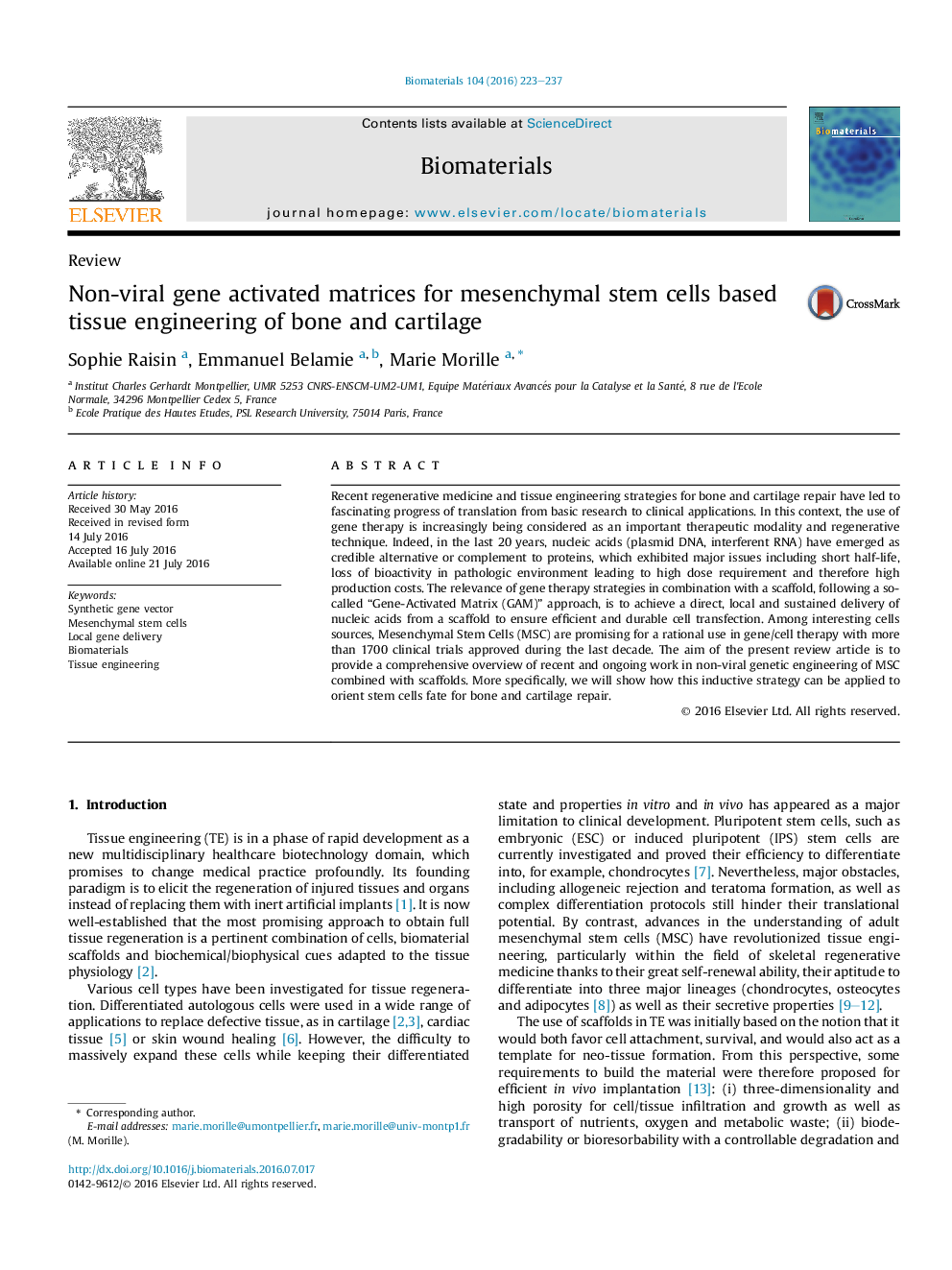| Article ID | Journal | Published Year | Pages | File Type |
|---|---|---|---|---|
| 6484819 | Biomaterials | 2016 | 15 Pages |
Abstract
Recent regenerative medicine and tissue engineering strategies for bone and cartilage repair have led to fascinating progress of translation from basic research to clinical applications. In this context, the use of gene therapy is increasingly being considered as an important therapeutic modality and regenerative technique. Indeed, in the last 20 years, nucleic acids (plasmid DNA, interferent RNA) have emerged as credible alternative or complement to proteins, which exhibited major issues including short half-life, loss of bioactivity in pathologic environment leading to high dose requirement and therefore high production costs. The relevance of gene therapy strategies in combination with a scaffold, following a so-called “Gene-Activated Matrix (GAM)” approach, is to achieve a direct, local and sustained delivery of nucleic acids from a scaffold to ensure efficient and durable cell transfection. Among interesting cells sources, Mesenchymal Stem Cells (MSC) are promising for a rational use in gene/cell therapy with more than 1700 clinical trials approved during the last decade. The aim of the present review article is to provide a comprehensive overview of recent and ongoing work in non-viral genetic engineering of MSC combined with scaffolds. More specifically, we will show how this inductive strategy can be applied to orient stem cells fate for bone and cartilage repair.
Related Topics
Physical Sciences and Engineering
Chemical Engineering
Bioengineering
Authors
Sophie Raisin, Emmanuel Belamie, Marie Morille,
